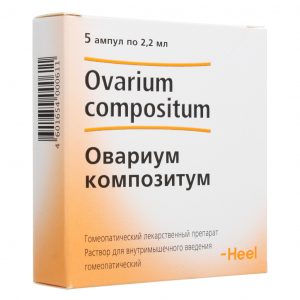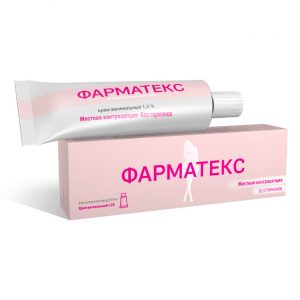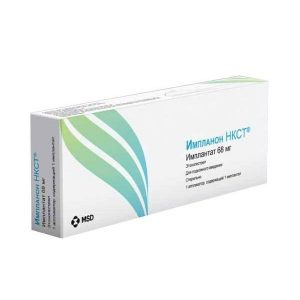Description
Device type
Intrauterine T-shaped contraceptive
Purpose
Woman’s desire to protect herself from pregnancy.
Treatment and prevention of Asherman’s syndrome.
As a post-coital remedy, the Navy of the Juno Bio-T series can be administered within 3-4 days after unprotected intercourse.
Functional Features
A distinctive feature of this contraceptive is the provision of a constant, optimal, regardless of the size of the uterus, effort at the contact points of the IUD and the uterine mucosa, which provides versatility – the possibility of using this contraceptive for any woman.
Characteristics
Contraceptive ‘Juno Bio-T’ is a classic model of the T-shaped medical IUD.
Anchor is made of high pressure polyethylene and has a shape with specified mechanical characteristics. The horizontal shoulders of the Navy end with olives. Around the vertical rod is a copper wire. At the end of the rod, a loop for attaching two transcervical filaments.
Anchor length 36 mm, width 32 mm. The area of the copper braid is 380 mm.
The degree of purification of the copper coating is 99.998%, the diffusion rate of the release of Cu2 + ions is 10-15 μg / day.
The IUD comes in blister packs complete with a 4.5 mm diameter polymer lead-in tube and piston. The lead-in tube has a movable plastic stop to indicate the depth of introduction of the tool and the direction of the plane of disclosure of the arm anchors.
Sterilization – gamma radiation.
Maximum duration of use: 5 years.
Recommended introduction technique is the ‘withdrawal’ method.
A distinctive feature of the Navy of the Juno Bio-T series is the preservation of a constant and independent of uterine contractions, efforts at the contact points of the shoulders of the contraceptive and the endometrium, this ensures the optimal spatial location of the product in the uterine cavity (high standing of the contraceptive and its pressing to the bottom of the uterus during physiological abbreviations).
Instructions for use
Recommended time for administration of contraceptive
– any day of the menstrual cycle (preferably from 4 to 19 days)
– immediately after a medical abortion performed by vacuum aspiration or curettage
– at the end of uterine involution (after 5-6 weeks after uncomplicated childbirth) including against the background of lactational amenorrhea
– immediately after removing the IUD, the expiration date of which has expired, if the woman wants to continue intrauterine contraception
– with the goal of postcoital contraception – 3-4 days after unprotected intercourse.
Adaptation to the IUD
During the patient’s adaptation to the IUD (3-4 months), changes in the menstrual cycle are possible. Menstrual bleeding can be accompanied by pulling pain in the lower abdomen or sacral region, which usually subsides quickly.
In order to increase the acceptability of the IUD and reduce the period of adaptation to contraceptives, it is recommended that: – a thorough examination of women for contraindications to the use of IUDs
is a differentiated approach to choosing the model of the IUD, based on the individual characteristics of the woman’s body, plans for childbirth, the time of administration of the contraceptive
– using the correct technique for administering an intrauterine contraceptive and the optimal timing for its installation
– according to indications, the prophylactic administration of antibiotics and prostaglandinogenesis inhibitors in the first days after administration and during the first three menstrual bleeding.
Navy introduction technique ‘Juno Bio-T’
Preliminary measures
Mandatory analysis of smears from ‘U’ and ‘C’ to ‘gN’, production of other analyzes according to indications.
Before introducing the IUD, do a thorough gynecological examination, determine the size and position of the uterus. Eliminate the presence of contraindications.
Under aseptic conditions, enter mirrors, treat the neck and vagina three times with an antiseptic solution. Fix the cervix behind the front lip with bullet forceps and lower it a little, determine the direction of the axis of the cervical canal and the length of the uterine cavity with a sterile probe.
Preparing a contraceptive for
Introduction Step 1. Open the IUD packaging on the transcervical side of the thread. Take the tube with the right hand by the stopper, and with the left hand pull the horizontal branches of the intrauterine device by the threads into the tube, until the olives. If in the process of pulling the contraceptive by the threads there are difficulties, with your right hand through the packaging, insert the arms of the IUD into the tube. Do not attempt to retract (completely insert the anchor into the inside of the tube).
Step 2. Insert the piston into the tube until it comes into contact with the contraceptive. In this case, the left hand holds the threads and the tube.
Step 3. Install the movable stopper at a distance corresponding to the length of the uterus along the probe.
Step 4. Align the horizontal plane of the limiter with the intended plane of disclosure of the arms of the IUD.
The recommended time from opening the package to the introduction of the IUD is no more than 7 minutes.
IUD Juno Bio-T insertion technique
Step 1. Slowly, without any effort, enter the prepared contraceptive through the cervical canal to the stop. The movement is carried out. introduction tube and piston at the same time.
Step 2. With the piston still stationary, pull the tube back to the ring. Attention, the piston should remain stationary, supporting the contraceptive, and the horizontal plane of the limiter should be aligned with the horizontal plane of the uterine cavity. When the tube is displaced by 2 cm, the horizontal shoulders of the contraceptive are revealed. After this, it is possible to additionally apply a contraceptive towards the bottom of the uterus.
Step 3. Remove the piston, then the inlet tube. Trim the transcervical sutures so that they protrude 2 cm from the cervix.
Removing the Iunon Bio-T IUD
To remove the contraceptive, fix the transcervical suture with a clamp and slowly remove the contraceptive. In this case, the shoulders of the T-shaped Navy are bent up. In rare, isolated cases (‘thread loss’), instrumental contraceptive removal may be necessary.
Special instructions
Intrauterine contraception is the introduction of small-sized devices (IUDs) into the uterine cavity.
The period of adaptation of the body to the IUD lasts about 3 months. Immediately after installing an intrauterine contraceptive, you may be disturbed by minor spotting from the genital tract, slight pain in the lower abdomen, which should go away after 2-3 days. To relieve pain, you can take 1-2 tablets of analgin or aspirin. Within 8-10 days, it is necessary to abstain from sexual activity, increased physical exertion, playing sports, visiting a bath, sauna.
Even if you feel good after 10 days, you should consult a doctor who has an IUD.
Within 2-3 months after the introduction of the IUD into the uterus, menstruation can be more abundant and longer, sometimes minor spotting from the genital tract between menstrual bleeding is noted. During menstruation, it is advisable to pay attention to sanitary pads in order to notice the loss of a spiral with menstrual flow in time.
Repeated examinations by a gynecologist You must go through 1, 3, 6 months after the introduction of an intrauterine contraceptive, then 1-2 times a year for the entire time the IUD is used.
When using intrauterine contraception, you must follow the usual hygiene regimen.
However, as with any modern method of preventing pregnancy, complications can arise: delayed menstruation (very rarely pregnancy can occur)
pain in the lower abdomen, pain during intercourse, fever, unusual discharge from the genital tract (signs of the development of inflammatory diseases of the genital organs)
after three months of menstruation remain prolonged, profuse, weakness, a feeling of malaise (signs of impaired adaptation to the IUD) appeared.
If these symptoms appear, you should immediately consult a doctor.
After the expiration of the use of the IUD, which the doctor has indicated to you, the contraceptive must be removed. If you like this method of contraception and you would like to continue it, after a preliminary examination on the day of extracting the ‘old’ IUD, you can install a new one.
Remember that you can remove an intrauterine device at any time according to your desire. This method of pregnancy protection does not affect reproductive function (pregnancy can occur immediately after removal of the IUD, regardless of the duration of its use).
An IUD is removed from the uterus easily, painlessly, but should not be done on its own.
Storage conditions
Store in a dry, dark place.
pharmacy terms and conditions
prescription
Simplex Pharma, India p19f41f47f47f47f4377f47f4377f47f4377f47f4377f41f4377f47f77f4377f47f77f4377f47f77f4f47f47f47f47f47 Simurg Russia




